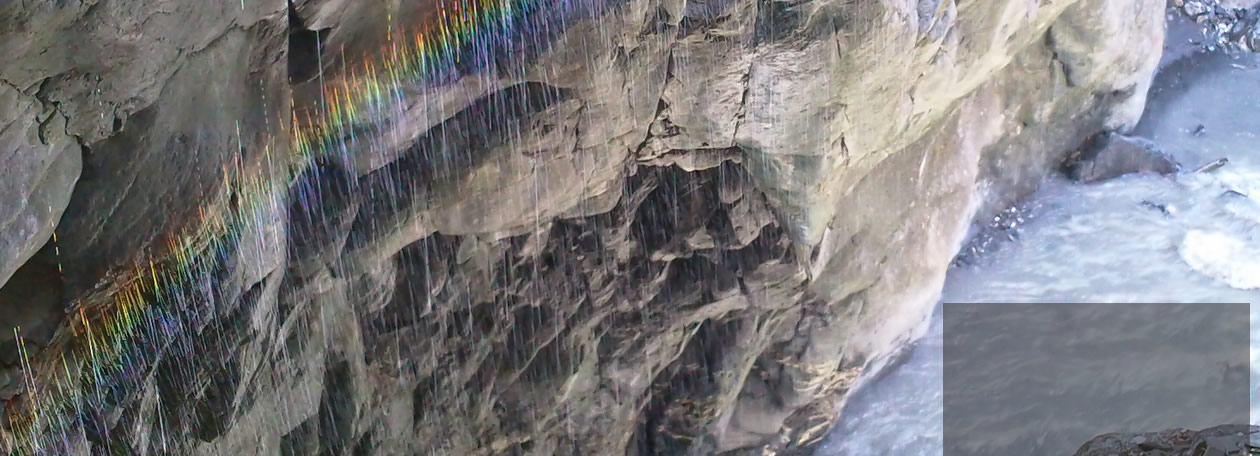High up at top left we see drops lighting a faint secondary rainbow. Then they become invisible to us. All but some oddballs talked about later. Then each drop flashes a succession of primary rainbow (not spectral!) hues starting with red through orange, yellows, greens, blues, indigos and violets. The colours get more subdued towards the violets. Their glints do not end there. They remain visible but only as ever fainter white and grey. Why?
Primary rainbow glints are all inside a cone extending from our eye and with its axis pointing towards the rainbow's centre, the anti-solar point opposite the sun. This is the �rainbow cone�. Drops outside the cone glint primary rainbow light just like those inside it but not to our eye. They cannot send their light towards the eye � they are dark.
As a drop plunges into the cone it first glints bright red. It is at the minimum deviation, MinDev, position where most red rays leaving it cluster forming a caustic. Then as the drop moves further, the MinDev conditions are reached in turn for other colours. The drop glints yellows through to violet.
That is the simple story of most textbooks.
Reality is richer. Let�s look at a drop (at lower left) when it has gone a little way into the cone - When it is glinting blue light towards us most intensely at the blue ray MinDev condition. Other rays than blue can still reach our eye. Two red rays can pass through the drop deviated through the same angle as the blue one. The red deviation angle is greater than the red MinDev angle but many red rays do that. Similarly for greens. Similarly for all colours of shorter wavelength than red. These are not bright MinDev ray clusters, they are fainter. But they are still there. They add their light to the glint making its colour less saturated.
Go far enough into the cone and all the individual colours emerging from each drop mix in the eye to make white. We see that in the top image. In a sky rainbow of millions of raindrops the white glow appears inside the bow as lighter sky. Here we are privileged to see how each drop makes that light.
|




